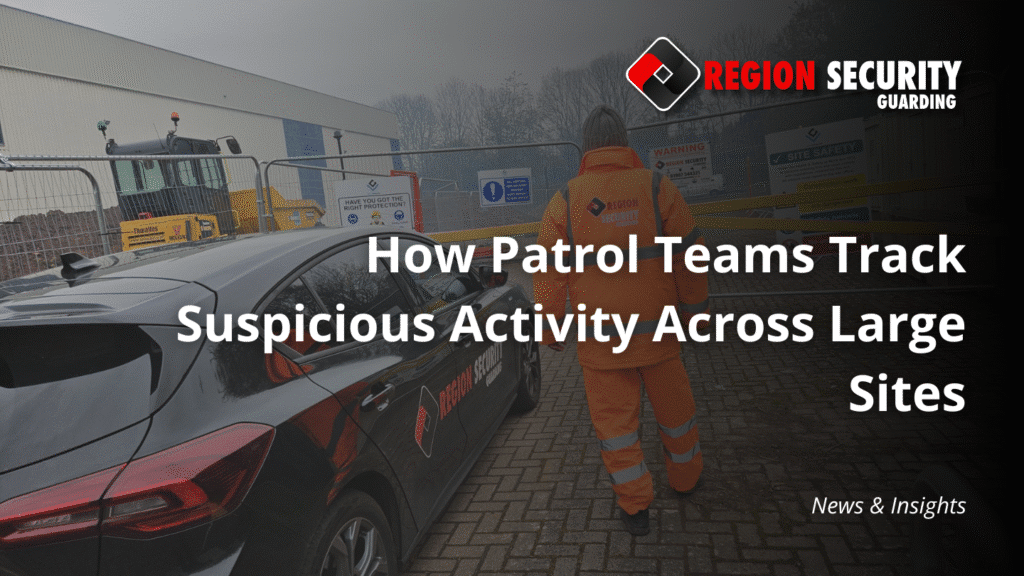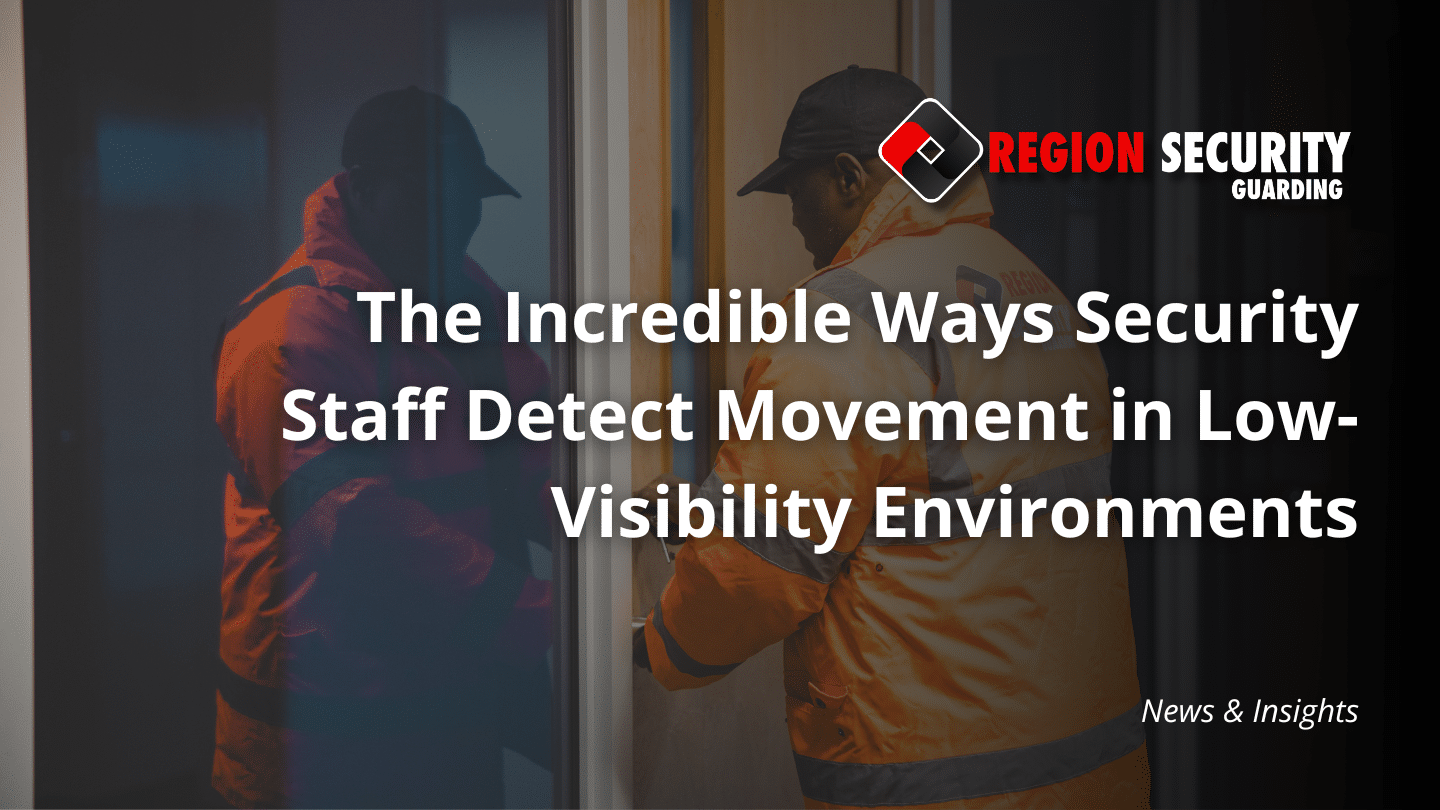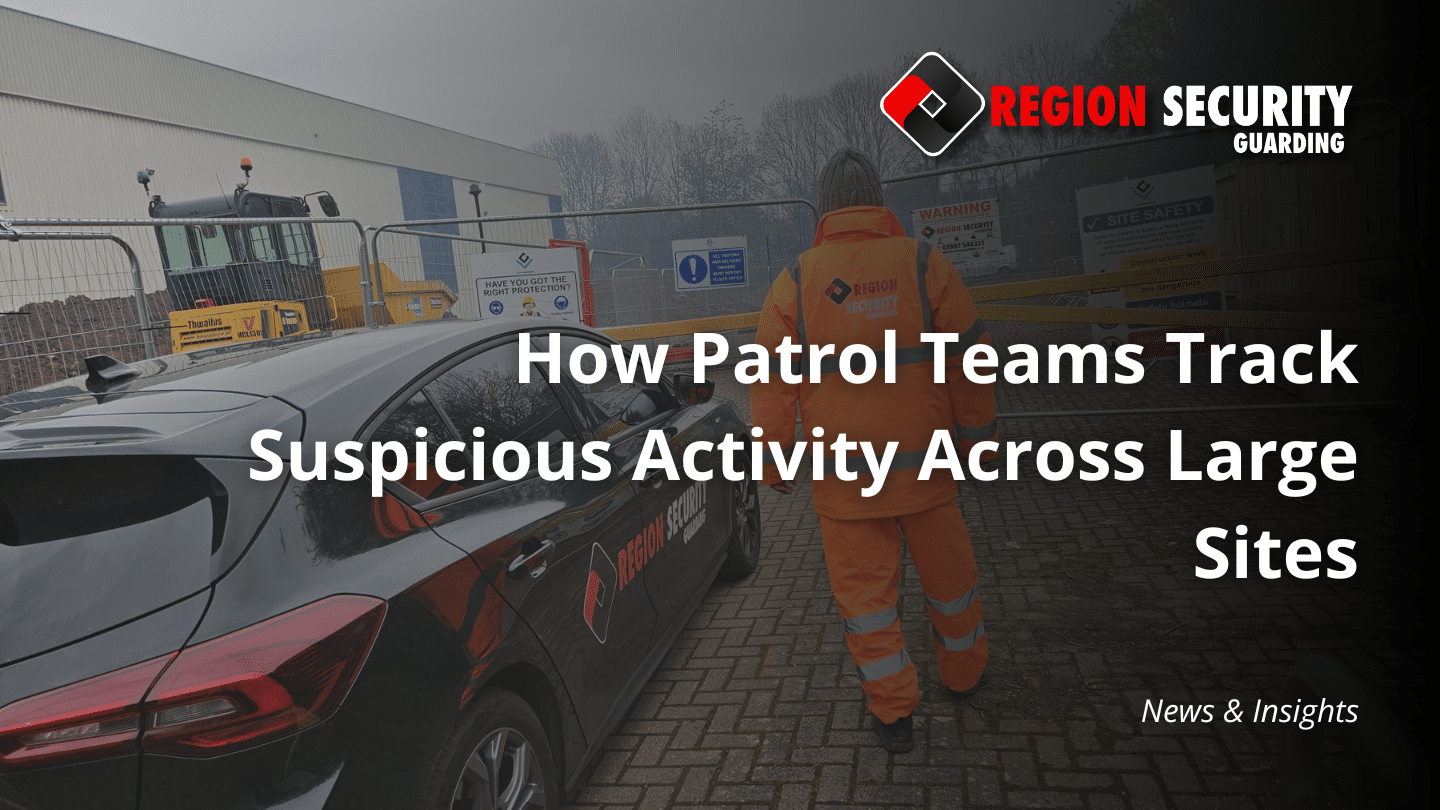One quiet corner on a large site can hide trouble. It creates an opportunity for thieves or vandals to slip in and out. Places like construction zones and wide logistics parks face this risk every day. They stretch out so far that shadows, blind turns, and long patrol paths become part of the job.
That is why site patrol security in Birmingham has shifted to a sharper mix of people and tech. Trained guards move with purpose, while smart devices watch what the eye can miss. Together, they turn open ground into safer ground.
This guide walks through the layers behind that shift and shows how patrol teams track suspicious moves across huge, hard-to-cover areas.
Table of Contents

Leveraging Smart Tech for Wide-Area Coverage
GPS and Digital Checkpoint Systems (Security patrol tracking)
Large sites need clear proof that guards reach the spots that matter most. GPS tools and small digital checkpoints help with that. At each key point, a guard scans a QR code or taps an NFC or RFID tag. This creates a simple record that shows their path without slowing them down.
It supports large site surveillance strategies by giving a clean trail of movement that teams can trust. Supervisors can see these updates as they happen.
If a guard misses a point or stays too long in one area, the system alerts them. This makes it easier to guide the shift without guesswork.
Adding random checks stops anyone from learning a fixed pattern, which closes easy openings for crime. These steps tie back into large site surveillance strategies by keeping patrols active and flexible.
Integrated CCTV and Remote Monitoring
CCTV adds another layer of watch over a wide space. Mobile towers can move anywhere on short notice. Their height gives a clear view over fences, vehicles, or stored goods.
In the control room, staff watch live feeds. They can call a patrol team to check an odd light, a moving shadow, or a person in the wrong place. Clear communication keeps the response fast.
Thermal and night-vision cameras help when light drops or the weather turns rough. They show body heat and movement, so guards do not lose sight of what happens after dark.
Using Historical Data to Predict and Prevent Threats
Risk Mapping and Dynamic Route Adjustment
Past incidents leave clues. When guards review old reports, they look at when problems happened, where they occurred, and what kind of activity was involved. Putting this information together creates a simple risk map. It shows the weak spots that need more attention.
GPS patrol tracking adds another layer. By studying movement data, guards can spot gaps where patrols rarely pass or patterns that repeat too often. Predictable routes can give intruders an easy opening, so this insight matters.
With this knowledge, patrol times and paths change. This approach makes site patrol security in Birmingham more effective because patrols no longer follow a fixed path. Instead, routes shift day by day, making it harder for anyone to guess where guards will be.
Turning Data Into Stronger Site Protection
Historical trends guide smarter planning, but the goal is action. When supervisors use data to plan coverage, they can set clearer priorities, prepare guards for likely threats, and adjust resources before trouble grows.
Over time, this reduces incidents, tightens weak points, and builds a safer site without slowing daily operations.
Human Intelligence and Proactive Observation
Defining “Suspicious Activity” on a Large Site
On a large site, “suspicious” can mean many things, such as a car sitting too long near an entry gate. A door left open when it should be locked. Strange noises like glass breaking or a machine starting after hours. It can also be someone walking around with no clear reason to be there. These small signs matter because they often come before an incident.
Guards focus on the zones marked as high-value or high-risk in the site’s own safety check. These are the places thieves often target first. Staying alert in these spots helps tighten suspicious activity monitoring and supports strong site patrol security in Birmingham.
Patrol Team Observation Techniques
Good patrol work depends on how guards move and what they notice. At risky points, they slow down. They check corners, doors, and storage areas.
In safer areas, they move faster to cover more ground. This mix keeps the patrol steady and sharp.
Training plays a big role. Guards learn to scan for marks on fences, fresh footprints, disturbed tools, or signs of forced entry. These habits form the base of solid patrol team observation techniques.
Some teams also use trained K9 units. Dogs can pick up scents, hear soft sounds, and detect movement behind barriers or in the dark.
Their senses fill the gaps that cameras and human eyes can miss. This adds an extra layer of safety to both patrols and ongoing suspicious activity monitoring.
From Alert to Apprehension: Real-Time Incident Management
Digital Incident Reporting and Communication
When something unusual happens, the first minutes matter. Patrol teams now use mobile apps to send quick reports from the scene. A guard can take a photo, add a short note, and the system adds the time and location on its own. This creates a clear snapshot of what they saw and where it happened.
It also supports real-time security incident detection, since the control room receives it immediately.
Communication stays open at all times. Teams use radios or the same app to talk with supervisors and control staff. This two-way link helps everyone understand the situation and decide what comes next.
After an incident, these detailed reports help review what happened and gather clean evidence for claims or follow-up action.
Alarm Verification and Emergency Escalation
Patrol teams also handle alarms on site, such as fire or intruder alerts. When an alarm triggers, they head to the exact point to check what caused it. This step matters because it tells the control room if the alarm is real or false.
Confirming the threat prevents unnecessary police calls while still protecting the site.
If the danger is real, guards follow set rules. They secure the area, guide people away, and keep the scene safe until police arrive.
In a hostile situation, they focus on staying calm, holding their ground, and sharing clear updates that support strong real-time security incident detection.
Final Thoughts
Strong site protection comes from mixing smart tools with skilled people. GPS checks, clear reports, and mobile CCTV help guards act fast and stay aware. Good site patrol security in Birmingham does more than stop crime.
Its steady presence lowers risk, reduces delays, and helps keep large sites running without costly breaks or needless trouble.
FAQs
1. Why are large sites tougher to protect?
Big spaces have many routes in and out. Long fences, open areas, and hidden spots make it easy for someone to slip through if no one is watching.
2. How does tech support patrol teams?
GPS tools, mobile cameras, and quick reporting apps help guards see more and act faster. These tools give clearer updates and cut guesswork.
3. What signs may point to trouble?
Strange sounds, open gates, slow-moving vehicles, or people with no real reason to be on-site can signal risk. Guards watch these small changes.
4. Why do patrol routes need to change often?
If routes stay the same, intruders can plan around them. Shifting paths keeps the site harder to predict.
5. How does site patrol security in Birmingham lower risk?
Trained guards and smart tools create a strong presence that helps prevent theft, delays, and costly damage.
Business Security You Can Rely On
Trusted by leading businesses nationwide for reliable, 24/7 protection.
or call 0330 912 2033

We have used Region security for quite a while now. Top notch service, great guards and helpful staff. We love our guards and the team for all of their help / work. No need to try the other companies at all."
Andy Yeomans - Jones Skips Ltd
Great company, professional services, friendly guards and helpful at times when required."
Rob Pell - Site Manager
A professional and reliable service. Always easy to contact and has never let us down with cover. No hesitation in recommending and competitively priced also. After using an unreliable costly company for several years it is a pleasure to do business with Region Security"
Jane Meier - Manager
Region Security were very helpful in providing security for our building. We had overnight security for around 4 months. The guards themselves were professional, easy to reach and adapted very well to our specific needs. Would definitely recommend Region for security needs.
Lambert Smith Hampton
Great service. Reliable and professional and our lovely security guard Hussein was so helpful, friendly but assertive with patients when needed. He quickly became a part of our team and we would love to keep him! Will definitely use this company again
East Trees Health Centre
Fantastic Service from start to finish with helpful, polite accommodating staff, we have used Region Security a few times now and always been happy with what they provide.
Leah Ramsden - Manager




